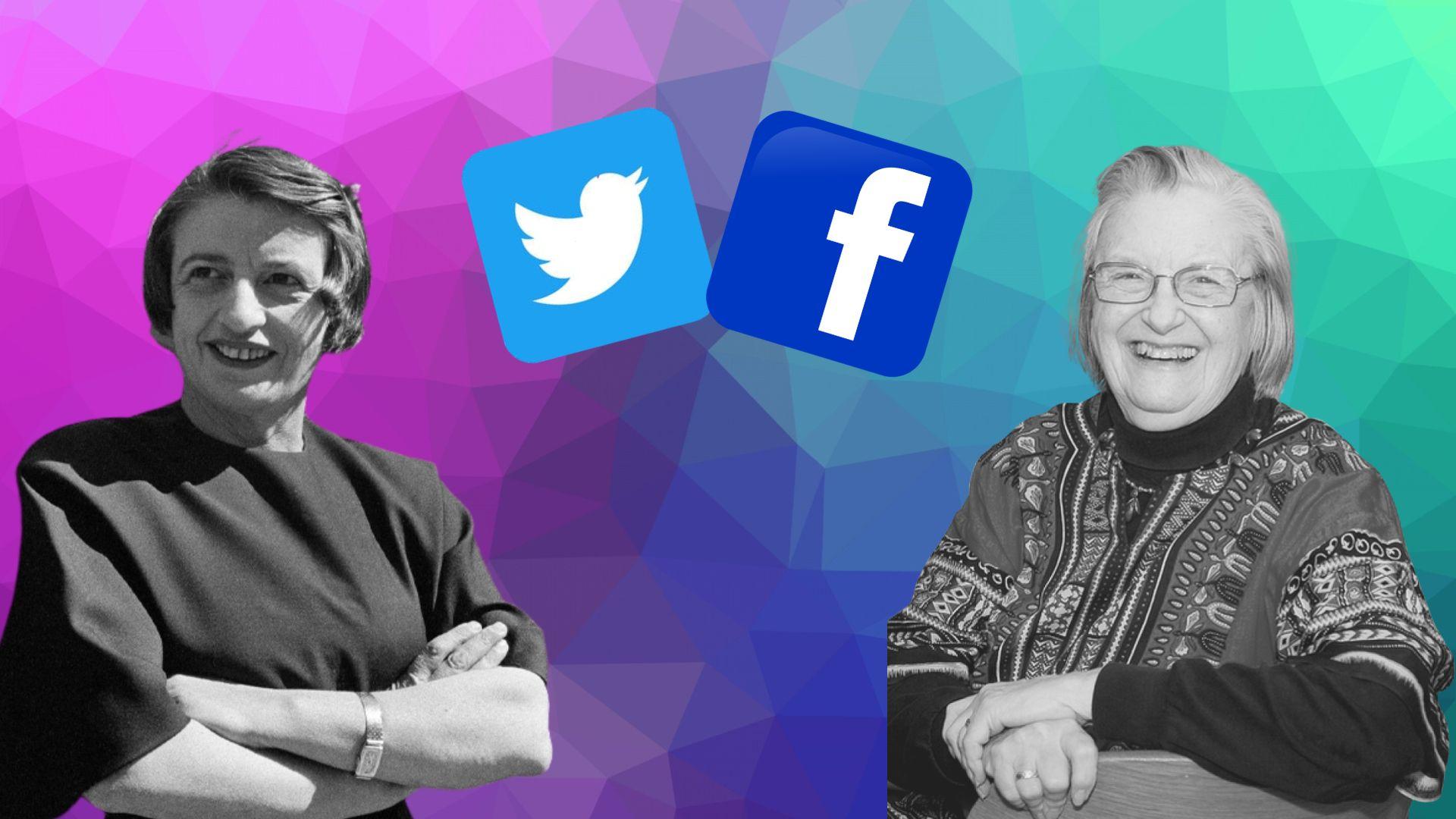The contrasting ideologies at play in this tech sector mirror the conflicting ideologies in economics
Elon Musk’s recent takeover of Twitter paralleled, in some sense, the 2016 earthquake when Donald Trump unexpectedly took over the Oval Office. In both cases, a populist billionaire put an existing entity with millions of members under radically new management. Unsurprisingly, whereas alarmed Americans had signaled a desire to escape to Canada in 2016, alarmed tweeters in the fall of 2022 signaled their trepidation by announcing their intention to move as well. But the most commonly threatened exit was to a structure of which few had ever heard: Mastodon.
Mastodon is but one of many new social media sites, alongside Post, Steemit, Planetary, or the Dorsey-funded Nostr, that are drawing attention in the face of Musk’s inscrutable decision-making with respect to the banning of journalists, the firing of personnel, and algorithmic changes. Many of these new sites focus specifically on shifting away from the centralized architecture of today’s tech behemoths like Twitter and Facebook.
It can be difficult to remember that a mere quarter century ago, the very social networks that have now demonstrated the terrible pitfalls of the social media revolution known as Web 2.0, were the objects of fanfare and genuine idealism. Facebook set out to “Connect the World,” while Google sought to make available all human knowledge for everyone at no cost. The latter went so far as to embrace the unofficial slogan of “Don’t be Evil.” In the spring of 2018, it was finally deliberately removed and retired from the preface to Google’s code of conduct when the obvious absurdity of the statement coming from an enormous hierarchical corporate leviathan made it more of an embarrassment than an asset.
These social media sites are perhaps the best example of the destruction of the idealism that characterized the development of the internet in the late 1960s. A time of flourishing countercultures, there was a belief, captured effectively in Richard Brautigan’s poem, “All watched over by machines of loving grace,” that we were entering a technological utopia, where machines would protect humans, and “mammals and computers (would) live together in mutually programming harmony like pure water touching clear sky.”
The idealism infected many of the original engineers of these social media sites. Evan Henshaw-Plath, one of the first employees of Twitter, points to the origin of Twitter as an open platform, a space by which people would build APIs and could interact with third-party services. The structure of the market, however, forced it away from that. The market has also defined the reality within which much of the architecture defining other social media sites was developed.
A neoclassical economic framework would tell us that this sort of manipulation of consumers should be kept in check in a well-functioning market by competitive forces, the way Facebook was able to outcompete Myspace in 2008 by promising a better user experience and increased privacy. But social networks are intrinsically natural monopolies – most users would prefer to be on a site that hosts all their friends than to have to spread out over several different sites. When Facebook took over as the dominant site in this space and proceeded to share highly personal user data while promising to keep it private, there was very little the market could do to rein in what was essentially a monopoly.
Much of the dissatisfaction with the Web 2.0 services is not based on the quality of the software engineering, as the market has provided many of the world’s most talented coders and tech managers the opportunity to build a highly reliable architecture that is given away to users for no monetary cost. Oddly, since the services are “free,” the problem stems instead from non-monetary market failures in the form of asymmetric information and principal-agent problems in a monopoly setting. The for-profit model of Twitter, Facebook, and other giant social media networks has increasingly been an advertising model which has obscured the real costs to the user in terms of privacy – hence the well-worn adage, “If you aren’t paying for the product, you are the product.” As the Supreme Court prepares to hear arguments in the case “Gonzales vs. Google,” where the family of an American killed in an ISIS terrorist attack blames YouTube for promoting terrorist videos, the debate about Section 230, which protects platforms from responsibility for content hosted on their sites, rages on. But more than the issue of hosting content the case points directly to the algorithms that suck viewers to increasingly darker and more toxic content because that has been proven to be the most effective way to keep them watching. It is the profit-driven imperative to increase engagement, and thereby ad revenue for the corporations, that drives these algorithms, and inevitably causes the problem, as powerfully captured by the movie “The Social Dilemma.” Fears of harassment and bullying, selling of personal data, and abuse of government backdoors, are all tied to the fact that users have become dependent on monopolies, where the costs paid are not in dollars but in safety, privacy, and manipulation by unseeable forces.
In the face of this manipulation, the notion of decentralization is increasingly attractive to users, and there has been a push to develop peer-to-peer or federated systems that emphasize distributed ownership and control, privacy, and control over one’s own data. The blockchain is one example of this, and there is a push to develop social media networks based on the blockchain architecture.
From its inception, the Blockchain has been deeply grounded in libertarian ideology. If there is an analog of Rand’s famous redoubt, free from institutional control, tech’s most likely parallel for Galt’s Gulch is Web 3.0. In fact, the parallel seems so tight that the fictional question of “Who is John Galt?” is literally replaced by the real-world question of “Who is Satoshi Nakamoto?” given the reliance of Web 3.0 on blockchain technology. In this digital gulch, the blockchain protocol allows for transactions that do not require a central authority building the concept of digital tokens as currency into the foundations of Web 3.0. The development of these protocols is largely backed by venture capital in the traditional economics of tech innovation.
There is, however, a counter move; one that harkens back to the idealism of the early internet, a belief that the technology can be used to build a more connected world. Through organizations such as the Internet Archive, a community is growing around the notion of a Decentralized Web (DWeb), where there is a push to build decentralized protocols that do not use the blockchain. This technologically-savvy future-oriented community has formalized a set of values, the DWeb principles, grounded in the Nobel-winning theories of Elinor Ostrom on game design for the solution of Garrett Hardin’s tragedy of the commons. The aim of this movement is to architect systems that can avoid the pitfalls of control of speech and interaction centralized in the hands of tech billionaires such as Musk or Zuckerberg controlled by cryptic algorithms designed to maximize corporate profits. While it is impossible to simply separate protocols into DWeb vs. Web 3.0, the general orientation of the DWeb community is to focus on designing or structuring systems built around models of governance that encourage community cooperation rather than relying on the market to resolve issues.
The common critique of Ostrom’s approach, however, is that while it might work in small-scale, locally governed commons, it is less likely to do so in the case of larger, national, or even global cases.[1] While farmers in a Swiss village may be able to develop institutional frameworks and agreements to prevent overgrazing, how do Ostrom’s principles work when attempting to, say, govern large oil companies driven by a profit motive and with significant resources at their disposal to lobby regulating bodies or change governments? In the case of social media, where the government itself has significant interests and incentives to exert power and control, as witnessed by reports of FBI involvement in Facebook content, or the revelations of the Twitter Files, and where giant tech corporations are managing billions of dollars in profits, do these institutional design principles really have the ability to scale?
In the end, the issue with social networks comes back precisely to the question of scaling. At a technical level, decentralized networks have the advantage of being more robust; when faced with attacks that destroy some nodes, other nodes, and links can be decoupled, limiting damage.
At an ideological level, they attempt to break from the capitalist, profit-driven models that lie at the heart of many of the current problems of social media. But the economics of the platforms cannot get around the fundamental issue of the economies of scale. Each of the links in a network cost something to run. While these costs can be distributed among users or a non-profit structure can be created to raise resources to support networks, it will require very creative architecture to push back against the inherent tendency towards a monopolistic structure.
Nonetheless, the contrasting ideologies at play in this tech sector mirror, to a surprising extent, the conflicting ideologies in economics between the most extreme, Ayn Randian version of libertarianism and its reflection in the neoliberal economic models of the Chicago School and the more heterodox, community-oriented approach of Ostrom. It is possible, and perhaps likely, that what we are watching is the nth iteration of a cycle that we seem powerless to exit. In this view, Ayn Rand might represent the thesis that the power of atomized market selfishness is sufficient and optimal for converting greed into a catalyst for pro-social greatness through the counterintuitive genius of the market’s invisible hand. By contrast, Elinor Ostrom represents the antithesis, as market failures due to monopoly, public goods, principal-agent problems, regulatory capture, etc. pile up until they torture the honest market argument into a form where it is almost no longer recognizable or easily defensible. What we are missing now is a synthesis into a harmonized model combining the insights of two existing schools.
This tension is not peculiar to decentralization. One man one vote (democracy) is likewise pitted against One Dollar One Vote (the market); Nonprofits vs For-profits; Open Source vs Proprietary software; Citizen Journalism vs Professional Reporting. In all cases, the structures appear side by side because the tension appears as yet unresolvable. And perhaps the overarching idea is that what we are dealing with is different failure modes of human beings. In the case of designing around communal values, we forget that anti-social elements form communities, just like pro-social elements, so simplistically empowering the community through optimally designed architecture without oversight, will likely always lead to inadvertently supercharging destructive actors. Likewise, the market will always succeed brilliantly until it finds its market failures, at which point we may find ourselves with tech oligarchs and digital dictators after the initial corporate idealism burns off and shareholder value takes over.
A perspective seldom shared is that while Ayn Rand and Elinor Ostrom may appear as antagonists battling for victory, their true function may be as an intellectual version of Heðinn and Hǫgni whose function in Germanic heroic legend is to sustain the Hjaðningavíg, an eternal legendary battle between antagonists which can never be won or lost. If this is in fact correct, the battle protects us against either pure failure mode by constantly rebalancing the power via dialectical tension. If this turns out to be true, we can look forward to seeing both intellectual frameworks presiding over new armies when we begin to hear about Web 4.0, 5.0, 6.0…ad infinitum.
Notes
The author is grateful for comments from Thomas Ferguson, Michael Grossberg and Eric Weinstein.
[1] See, for example Araral, Eduardo. “Ostrom, Hardin and the commons: A critical appreciation and a revisionist view.” Environmental Science and Policy 36 (2014) 11-23







